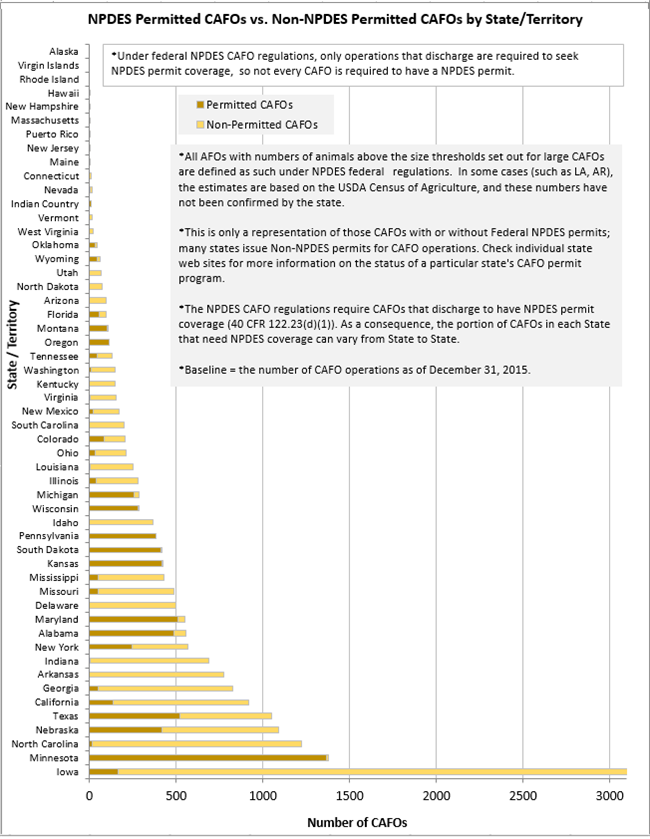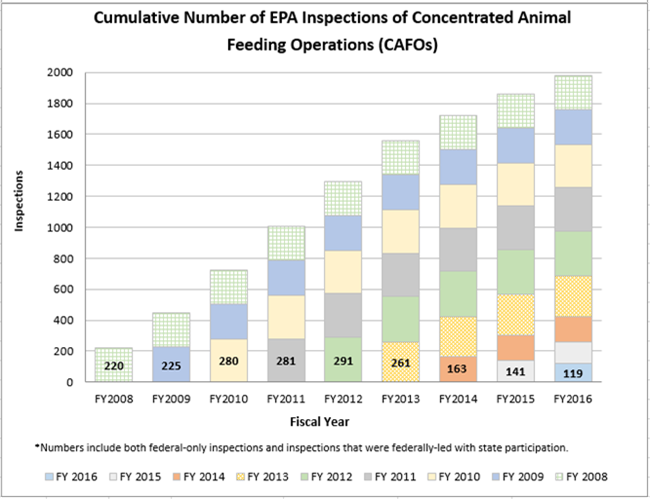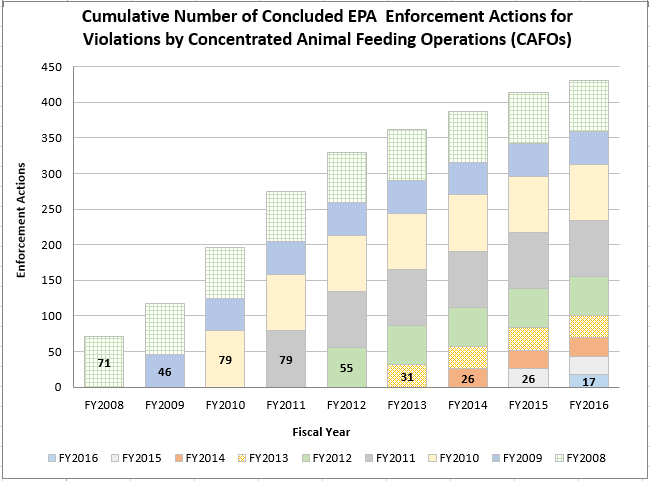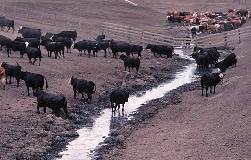National Enforcement Initiative: Preventing Animal Waste from Contaminating Surface and Ground Water
Fast Fact
USDA's 2007 Census of Agriculture data resulted in an estimate that 2.2 billion head of livestock (cattle, dairy, and swine) and poultry generated approximately 1.1 billion tons of manure in 2007.
If not managed properly, pollutants (nutrients, ammonia, and bacteria) in manure can degrade surface water and ground water and threaten human and ecological health.
Problem
Concentrated animal feeding operations (CAFOs) are a subset of livestock and poultry animal feeding operations (AFOs) that meet the regulatory thresholds of number of animals for various animal types. Animals are kept and raised in confined situations for a total of 45 days or more in any 12-month period and feed is brought to the animals rather than the animals grazing or otherwise feeding in pastures, fields, or on range land.
At these facilities, live animals, as well as mortalities, feed, and animal wastes may be congregated on a small land area. These operations generate significant volumes of animal waste which, if improperly managed, can result in environmental and human health risks such as water quality impairment, fish kills, algal blooms, contamination of drinking water sources, and transmission of disease-causing bacteria and parasites associated with food and waterborne diseases.
Goal
EPA will use innovative monitoring and targeting techniques to identify areas where CAFOs impair our nation’s natural resources or adversely impact communities, and will promote technologies to address excess nutrients and reduce animal waste pollution.
Progress on Preventing Animal Waste from Contaminating Surface and Ground Water
The following maps and charts show EPA's progress in reducing animal waste pollution from livestock and poultry concentrated animal feeding operations (CAFO) operations.
- Permitted vs non-permitted CAFOs by state/territory

- Cumulative number of EPA CAFO inspections

- Cumulative number of EPA CAFO concluded enforcement actions

Map of large concentrated animal feeding operations (CAFO) and EPA CAFO inspections and enforcement actions

